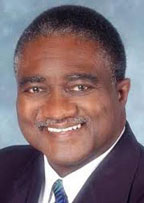
President Obama seeks to do something with do-nothing Congress
By George E. Curry, NNPA Columnist
President Obama’s State of the Union speech Tuesday night, parts of which were shared over the weekend, was designed to be upbeat and to again sketch his vision for an economically “United” States of America. But this year’s speech, like the one a year ago and like his second inaugural address, was a gallant effort to remain relevant during an era of a do-nothing Congress that will do even less in 2014.
Heading into his sixth year of office, President Obama has finally accepted the reality that he can’t change Washington. At least, not for the better. Having already passed the Affordable Health Care Act, the signature accomplishment of his administration, President Obama’s goal in his last two years will be less ambitious: to continue to improve the economy, lower the unemployment rate, expand access to early childhood education, enact immigration reform, make progress on climate control and curb the nation’s propensity to get entangled in wars that have little, if anything, to do with our national security.
With many of his proposals lost in the logjam of Congress, President Obama now plans to do more by executive order, according to his aides. Speaking Sunday on ABC’s “This Week,” Press Secretary Jay Carney said, “What we saw in 2013 was a Washington that did not deliver for the American people. The President sees this as a year of action, to work with Congress where he can and to by-pass Congress where necessary…”
According to the Washington Post, White House senior adviser Dan Pfeiffer has submitted a three-page memo that outlines a different strategy for 2014.
“Among its conclusions is that President Obama, a former state legislator and U.S. senator, too often governed more like a Prime Minister than a President. In a parliamentary system, a Prime Minister is elected by lawmakers and thus beholden to them in ways a President is not. As a result, Washington veterans have been brought into the West Wing to emphasize an executive style of governing that aims to sidestep Congress more often.”
That means more executive orders and leaving the legislative haggling primarily to Senate Majority Leader Harry Reid (D-Nevada).
President Obama understands that the Republican-controlled House in particular will continue to obstruct whatever legislative plans he might offer.
According to the Pew Research Center, the 113th Congress is on track to be one of the least productive.” Unlike most measurements that only take into account the amount of legislation pas-sed, Pew tallied only substantive legislation and found this Congress lacking.
Consequently, according to another Pew survey, “Views of Congress remain historically negative: just 21 percent have a favorable opinion of Congress while 70 percent view it unfavorably. Opinions of Congress fell to a 20-year low in August 2011, following the contentious debate over raising the nation’s debt ceiling, and have never recovered.
“Large majorities across nearly all demographic and partisan groups have an unfavorable impression of Congress. About seven-in-ten independents (73%) view Congress unfavorably, as do 69% of Democrats and 67% of Republicans.”
In a break from his normal over cautiousness, President Obama acknowledged that race may be a factor in the strong oppositions to his programs.
“There’s no doubt that there are some folks who just really dislike me because they don’t like the idea of a Black President,” President Obama told the New Yorker magazine in an interview. “There is a historic connection between some of the arguments that we have politically and the history of race in our country, and sometimes it’s hard to disentangle those issues.”
President Obama is not the only one who thinks race drives many of his opponents. A Rasmussen poll last November found: “One-in-four voters believes racism is the driving factor behind opposition to his [President Obama’s] policies.”
While President Obama is unlikely to make any progress on race, but he hopes that anger over huge corporate profits and record Wall Street gains will be a rallying point for both Democrats and Republicans.
According to the Tax Policy Center, the top fifth of the population receives 66 percent of tax-expenditure benefits, the middle 60 percent of the population receives a little more than 31 percent of tax-expenditure benefits, the bottom fifth receives just 2.8 percent of tax-expenditure benefits and the top 1 percent of the population receives 23.9 percent of tax-expenditure benefits. And the report pointed out, “That’s more than eight times as much as the bottom fifth of the population, and nearly as much as the middle 60 percent of the population.”
Republicans, traditional protectors of the rich, aren’t likely to join President Obama in trying to narrow the gap between rich and poor. And they’re even less likely to do so in a mid-term election year, a time the party in power usually looses seats in Congress.


Be the first to comment